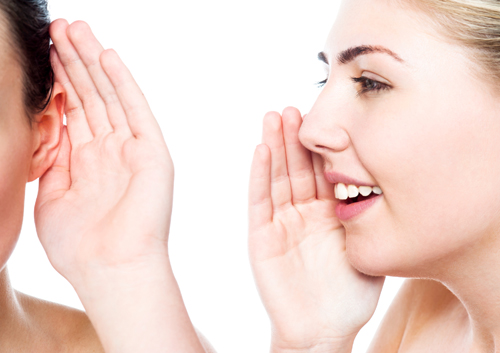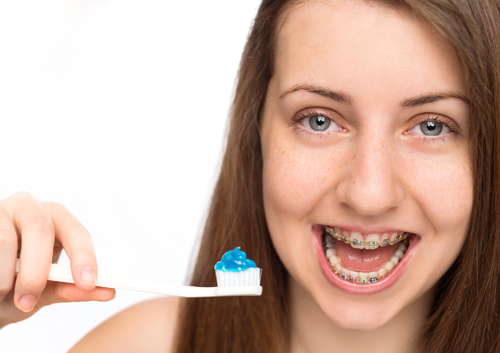April 30th, 2015

The stereotypical braces wearer – in middle school, with a mouth full of metal brackets – has led to numerous myths about orthodontics that discourage many people from getting the dental care they need. Dr. Thomas Shipley and our staff would like to put some of these myths to rest.
Myth 1: Orthodontic treatment is for kids. Although teenagers often visit the orthodontist to get braces, adults represent a growing proportion of orthodontic patients. Whether you’re eight or 80, a consultation with an orthodontist can identify problems with your teeth, jaws, or bite that can be corrected by orthodontic interventions.
Myth 2: Traditional, metal braces are my only option. Advances in orthodontic technology have rendered improved braces and other orthodontic appliances that are much less noticeable than the braces of yesteryear. Ask Dr. Thomas Shipley about Invisalign® braces and other options that make sense for your situation.
Myth 3: Orthodontic treatment is only helpful for crooked teeth. Sure, a crooked smile is a common reason that patients seek orthodontic care. However, orthodontic interventions help with a range of dental health problems. From missing teeth to overbite to jaw misalignment, your orthodontist can help with many problems associated with the teeth, gums, and jaws.
Myth 4: Orthodontic treatment is too expensive. As with any medical procedure, orthodontics can be pricey. However, our Peoria, AZ team works with patients to find payment plans, insurance coverage, or other payment options that reduce the financial burden.
April 23rd, 2015

In-Ovation braces are much smaller than traditional braces, are less noticeable on your teeth, and use the method of self-ligation. This type of braces doesn’t require the use of the elastic bands to keep the wires in the correct place, which makes your orthodontic experience more convenient and comfortable.
There are two types of In-Ovation braces: In-Ovation R and In-Ovation C, both of which supply the same benefits of less pain than traditional braces, shorter treatment time, and a beautiful smile!
In-Ovation R Braces
This impressive orthodontic treatment is specifically aimed to provide you with a better hygienic and aesthetically favorable treatment procedure while moving your misaligned and crooked teeth into a better more attractive position.
In addition, the distinctive method of In-Ovation R braces provides less discomfort because there is nearly no pressure applied to your teeth. Another benefit of In-Ovation R braces is you do not require as many visits with Dr. Thomas Shipley during your treatment process.
Other benefits include:
- Quicker treatment time: About four months shorter than the traditional braces
- More comfortable
- Fewer visits to our Peoria, AZ office
- Enhanced facial aesthetics
- Shorter orthodontic appointments with no uncomfortable adjustments
- No elastic bands or metal allows for easy care of your dental health and a reduction in the risk of developing cavities
With traditional metal braces, elastic bands are used to keep the wires in place. In-Ovation R braces use a free-sliding technology that gently moves your teeth while implementing minimal to no pressure. The procedure can also make the entire progress quicker and completed without all the discomfort and inconvenience.
In-Ovation C
In-Ovation C braces offer all same the benefits of In-Ovation R, with one small difference: this type of braces is clear in color. Rhodium (a silvery-white metallic element) covers the clips making the In-Ovation C braces appear less visible. In-Ovation C braces offer a more inconspicuous way to straighten your teeth, and give you that beautiful smile you always wanted.
April 16th, 2015

Water picks, sometimes called “oral irrigators,” make an excellent addition to your regular home care regimen of brushing and flossing. Especially helpful to those who suffer from periodontal disease and those patients of ours undergoing orthodontic treatment with full-bracketed braces, water picks use powerful tiny bursts of water to dislodge food scraps, bacteria, and other debris nestled in the crevices of your mouth. Children undergoing orthodontic treatment may find using a water pick is beneficial if their toothbrush bristles tend to get caught on their wires or brackets.
When you use a water pick, you’re not only dislodging any particles or debris and bacteria you might have missed when brushing, you are also gently massaging the gums, which helps promote blood flow in the gums and keeps them healthy. While water picks are an excellent addition to your daily fight against gingivitis and other periodontal diseases, they are incapable of fully removing plaque, which is why Dr. Thomas Shipley and our team at Shipley Orthodontics want to remind you to keep brushing and flossing every day.
If you have sensitive teeth or gums and find it uncomfortable to floss daily, water picks are a good alternative to reduce discomfort while effectively cleaning between teeth. Diabetics sometimes prefer water picks to flossing because they don't cause bleeding of the gums, which can be a problem with floss. If you have a permanent bridge, crowns, or other dental restoration, you may find that a water pick helps you keep the area around the restorations clean.
So how do you choose the right water pick?
Water picks are available for home or portable use. The home versions tend to be larger and use standard electrical outlets, while portable models use batteries. Aside from the size difference, they work in the same manner, both using pulsating water streams. A more crucial difference between water picks is the ability to adjust the pressure. Most home models will let you choose from several pressure settings, depending on how sensitive your teeth and gums are. Most portable models have only one pressure setting. If you want to use mouthwash or a dental rinse in your water pick, check the label first; some models suggest using water only.
Please give us a call at our Peoria, AZ office if you have any questions about water picks, or ask Dr. Thomas Shipley during your next visit!
April 9th, 2015

A clean mouth is a happy mouth. And when Dr. Thomas Shipley and our staff see you have a clean mouth, we are happy too. Of course, all of this should make you happy because you’re the one preventing sneaky little food bits from getting trapped under the wires of your braces.
Still, you need to be thorough with your brushing. When you have braces, you’re playing a game of hide-and-go-seek with everything you eat. Here are five tips to keep your mouth (and us) happy.
- How is brushing with braces like geometry? It’s all about the angles. Brush the tops of your teeth and braces with your brush angled down. Brush the bottom of your teeth with the brush angled up. Pointy brushes, aka interproximal brushes, are good for reaching the tiny spots around braces.
- Brush after every meal. If those sneaky little food bits hide in your mouth for very long, they’ll turn into plaque. And plaque is a sign of a very unhappy mouth.
- Brush one tooth at a time for at least ten seconds, and pay close attention to the spots where your braces touch your teeth.
- Fluoride is your new BFF. Make sure your toothpaste and mouthwash contain this cavity-fighting ingredient.
- Braces are no excuse not to floss. In fact, saying you can’t floss because you have braces is like saying the dog ate your homework. Dr. Thomas Shipley and our staff, like your geometry teacher, aren’t going to buy it. Be sure to floss after every meal.





 Website Powered by Sesame 24-7™
Website Powered by Sesame 24-7™